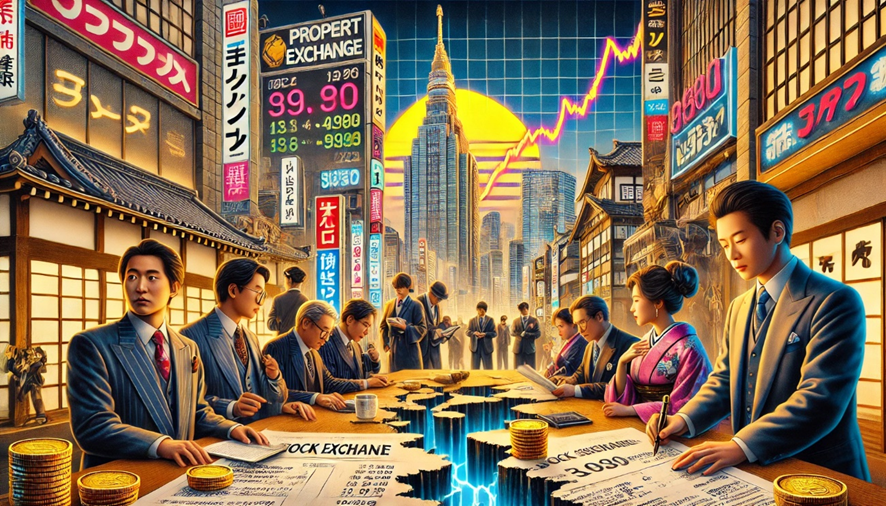Japan’s Economic Bubble
Japan's economic bubble, which peaked in the 1980s, was a phenomenon characterized by a rapid and uncontrolled rise in real estate and stock prices. This period of boom, followed by a prolonged collapse, profoundly shaped Japan’s economy and provided crucial lessons about the risks of speculative bubbles.
The Context: The Japanese Miracle
After World War II, Japan experienced extraordinary economic growth, known as the "Japanese Miracle." Through export-oriented policies, technological advancements, and a focus on industrial efficiency, the country became a global economic powerhouse. However, by the 1980s, this growth gave way to overconfidence in financial and real estate markets.
The economic bubble developed in a context of low inflation and reduced interest rates. These conditions, combined with government policies encouraging credit expansion, spurred massive borrowing from banks. Businesses, investors, and individuals began speculating on real estate and stocks, believing prices would rise indefinitely.
The Bubble: Excess and Speculation
In the 1980s, real estate and stock prices in Japan began to soar exponentially. Metropolitan areas, especially Tokyo, became centers of speculation. For example, it was said that the land value of the Imperial Palace in Tokyo exceeded the total real estate value of California.
The stock market mirrored this trend. The Nikkei 225 index rose from 10,000 points in the mid-1980s to nearly 39,000 points by 1989. This growth attracted domestic and international investors, fueling the belief that the boom was sustainable.
Speculation reached irrational levels, with many investors buying real estate and stocks solely to resell them at higher prices. Banks, playing a central role, amplified systemic risk by providing easy credit and accepting overvalued real estate as collateral.
The Burst of the Bubble
In late 1989, the Bank of Japan, concerned about the overheated economy, raised interest rates to curb speculation. This triggered a domino effect in the markets. Real estate prices began to decline, and confidence in the stock market plummeted.
The Nikkei index lost more than 60% of its value in the following years, dropping below 15,000 points by 1992. Real estate prices, which had reached absurdly high levels, also collapsed. This dual blow triggered a prolonged economic crisis, known as Japan’s "lost decade."
Factors That Worsened the Crisis
The collapse of the bubble had devastating effects on Japan’s economy due to several structural factors. First, debts incurred during the boom became unpayable as asset prices fell. This affected both banks and businesses, creating a vicious cycle of insolvency.
Additionally, the Japanese government was slow to respond to the collapse. Although it implemented fiscal stimuli and bank bailouts, these measures were insufficient to revive the economy. The rigidity of the financial system, combined with a lack of structural reforms, prolonged the recession.
Deflation, a rare phenomenon in developed economies, also played a significant role. The constant decline in prices made recovery difficult, as businesses and consumers delayed spending and investment in anticipation of further price drops.
The Consequences of the Bubble
The burst of Japan’s economic bubble left an indelible mark on the country. The economy, which had grown rapidly for decades, entered a stagnation that lasted over a decade. Many banks collapsed or required bailouts, and unemployment rates, though low by global standards, rose significantly in Japan.
The collapse also deeply affected investor and consumer confidence, creating an atmosphere of economic pessimism that lingered for years. Globally, Japan’s case became a key study on the dangers of speculation and the mishandling of economic bubbles.
Lessons from the Japanese Bubble
Japan’s economic bubble serves as a powerful reminder of how uncontrolled speculation and excessive credit can inflate markets beyond their fundamentals. It also highlights the importance of swift and effective responses to mitigate the consequences of a collapse.
Today, Japan’s experience remains relevant for economies facing bubbles in real estate or financial markets. Japan’s case demonstrates that unsustainable growth always comes to an end, and economies must be prepared to manage the aftermath.

